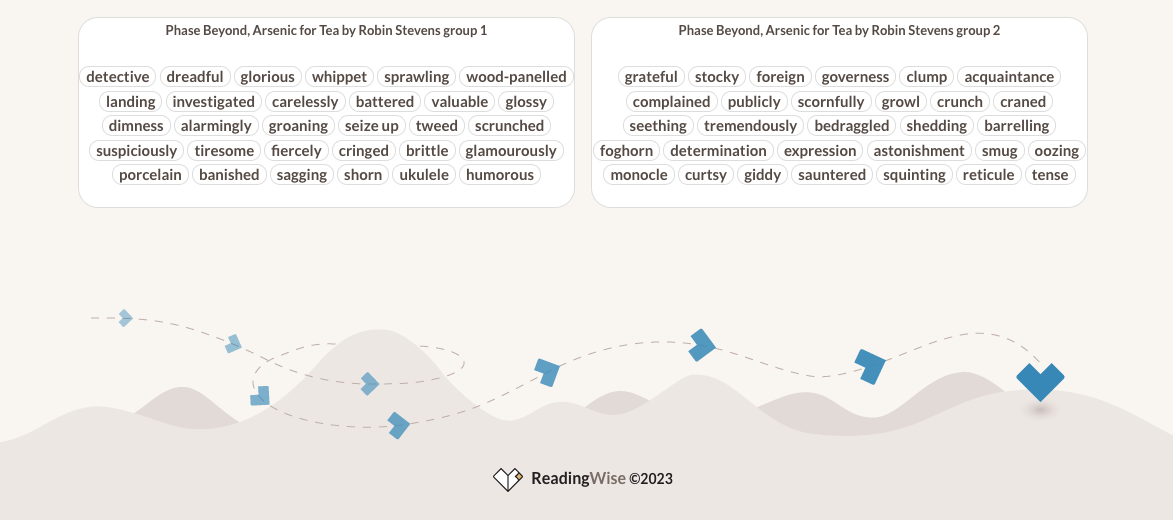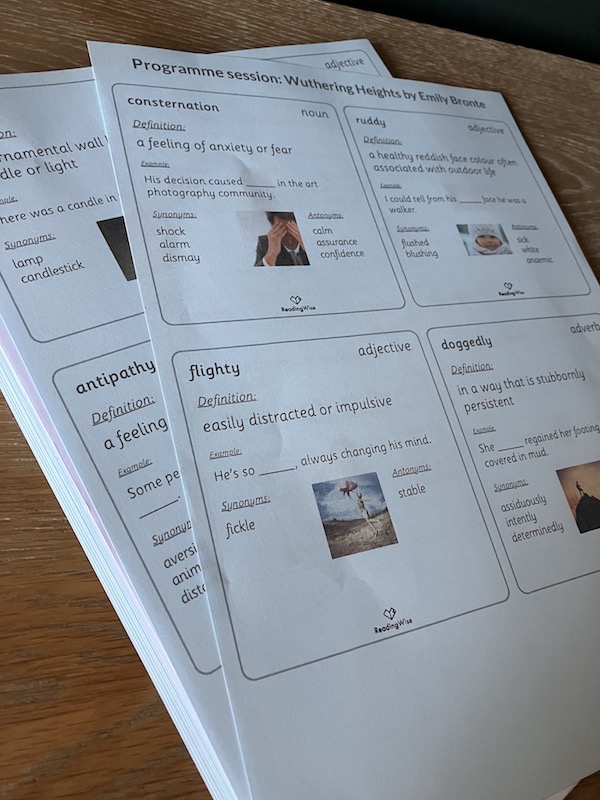
Arsenic for Tea by Robin Stevens - Vocabulary
"Arsenic for Tea" is a captivating and cleverly crafted mystery novel by Robin Stevens, published in 2015. This book is the second instalment in the popular "Wells & Wong" series, featuring two young sleuths, Hazel Wong and Daisy Wells.
Set in the English countryside during the 1930s, the story begins with Hazel Wong, a perceptive young girl from Hong Kong, visiting her best friend Daisy for the school holidays. Their stay takes a dark turn when Daisy's father is found dead during a family gathering. The death is initially assumed to be from natural causes, but Daisy and Hazel suspect foul play.
The girls embark on an investigation, using their keen detective skills to uncover the truth. As they interview the family members and guests, they begin to unravel secrets and motives that point to murder. The story is filled with classic elements of a murder mystery, from hidden clues and red herrings to unexpected twists and revelations.
"Arsenic for Tea" combines the charm of the Golden Age of detective fiction with the fresh perspective of its young protagonists. Hazel and Daisy make an engaging and dynamic duo as they tackle the case, while navigating the complexities of their own friendship at the same time.
Language in "Arsenic for Tea"
Robin Stevens' use of language in "Arsenic for Tea" reflects the era in which the story is set, with a touch of modern sensibility. The narrative paints wonderful pictures of an English country estate during the 1930s, complete with descriptions of tea parties, estate grounds, and other period-appropriate details.
Stevens employs a clear and accessible language style that’s suitable for a young audience while maintaining the intricate and clever storytelling that’s so essential for a murder mystery. The book's language is filled with witty dialogue and clever banter, adding to the sense of camaraderie between the two main characters.
A key part of the story is the exploration of Hazel's identity - a girl from Hong Kong in a predominantly English setting. Her perspective and unique cultural background add depth to the narrative and challenge the assumptions and prejudices of the time.
The story's language also highlights the importance of observation and deduction in solving mysteries. As Hazel and Daisy piece together clues, readers are encouraged to use their own critical thinking skills, making the story both an enjoyable read and an interactive puzzle.
"Arsenic for Tea" blends evocative language, engaging characters, and a classic murder mystery plot to create a captivating and often funny novel for young readers - probably best suited to KS2 and KS3 students. The language used in the book not only serves to transport readers to the English countryside of the 1930s but also underscores the importance of observation and deduction in solving mysteries, making it a delightful and intellectually challenging read. We hope that our word lists can help your students develop their understanding of the characters and the story even further.
You can also access an editable list here.
Vocabulary Cards
As well as word lists, we also offer free use of our vocabulary cards, which can be downloaded as a PDF for use in class. Complete a short form and we will email you the cards straight away.
Vocabulary cards include:

- Definition;
- Word type;
- Synonyms and antonyms;
- Example sentence;
- Image.
Check out our weekly lists every Wednesday! Click here for last week's curation...
Find out more about our Vocab module. It's simple, online, and each learner has their own username and password. You (the teacher) allocate the word list you'd like your class to work on... and away they go!








